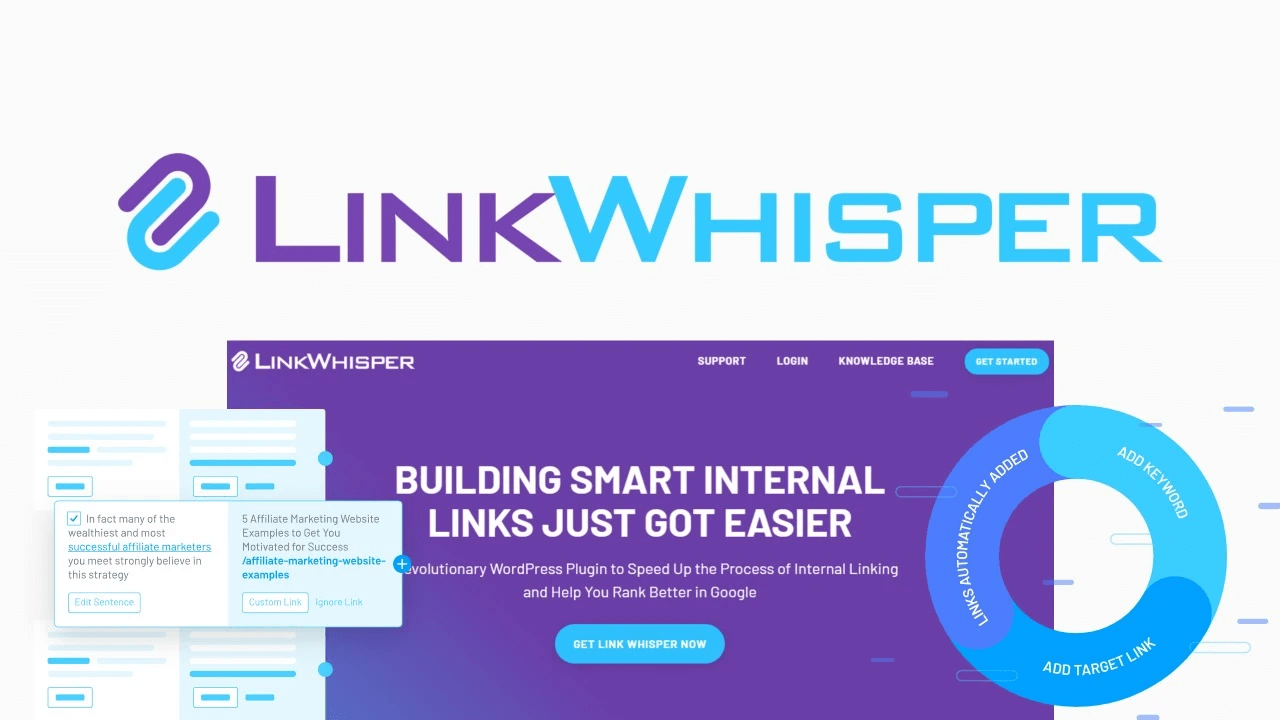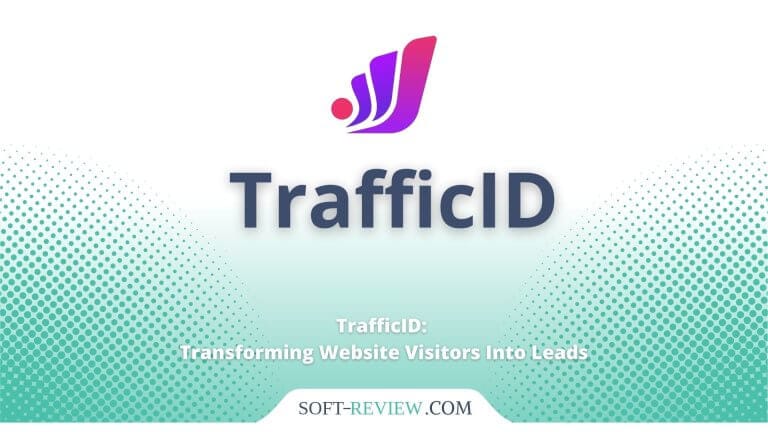<!-- wp:social-links --><ul class="wp-block-social-links"><!-- wp:social-link {"url":"https://gravatar.com/wwwsoftreviewcom","service":"gravatar","rel":"me"} /--></ul><!-- /wp:social-links -->

Link Whisper: Boosting SEO And User Experience With Internal Links
Are you looking for a way to boost your website’s SEO and user experience? Link Whisper might be the answer. This powerful tool is designed to help you quickly and easily add internal links to your content, allowing search engines and users alike to navigate your site with ease. In this article, we’ll explore what Link Whisper is, how it works, and why it can be so beneficial for your website.
Link Whisper is a relatively new plugin that simplifies the process of creating internal links. It has been met with great enthusiasm among webmasters and content creators who are looking for ways to improve their site’s usability while also increasing its visibility in search engine rankings. By using Link Whisper, users can automatically create internal links when they publish new posts or pages on their website. These internal links are then indexed by search engines, helping your site rank higher in relevant searches.
In addition to improving SEO, Link Whisper also helps improve the user experience on your website by making it easier for visitors to find related content. By creating intuitive pathways between pages and posts, readers can quickly jump from one section of the site to another without getting lost or confused. This not only makes navigation smoother but also helps keep readers engaged with your content longer ー both key factors in successful websites!
Table of Contents
Definition Of Link Whisper
Link Whisper is a powerful SEO tool that helps users optimize their internal links for improved search engine rankings and user experience. Internal links are links on one page of a website that point to another page on the same website. Link Whisper makes it easy to manage and update these links, saving time and effort.
Link Whisper allows users to easily identify broken and outdated internal links, ensuring that visitors are able to navigate the website without running into any dead ends. It also automatically suggests related pages or posts to link to, with an intuitive drag-and-drop interface for linking pages together quickly and easily. Link Whisper even allows users to add custom keyword-rich anchor text, further boosting SEO efforts.
By taking advantage of Link Whisper’s features, websites can get increased traffic from search engines while improving the user experience by providing relevant information and more intuitive navigation controls. This is beneficial not only for websites’ ranking but also for their bottom line as well ー increased traffic often leads to more sales or conversions.
Benefits Of Internal Links
Link Whisper is a powerful tool for optimizing SEO and user experience with internal links. It helps to improve site navigation, allows users to explore related content, and boosts search engine rankings. Internal linking can be used to generate more organic traffic, increase page views, and reduce bounce rates.
Internal links help to guide visitors through a website by providing useful information along the way. When properly placed in content, internal links make it easier for readers to learn more about the topic and find other related pages on the site. This allows them to interact with the content in a meaningful way and increases their time spent on the website.
Creating effective internal links with Link Whisper is easy and straightforward. It automatically suggests relevant keywords or phrases that are relevant to the topic of the page being linked from. This makes it easy for webmasters to quickly create internal links without having to manually research each link’s target page or keyword phrase. Link Whisper also provides analytics so webmasters can track how much traffic each link is driving and make adjustments if needed.
Using Link Whisper as part of an overall SEO strategy can lead to significant improvements in user experience and increased organic search engine traffic over time.

Strategies For Creating Internal Links
Creating internal links is an important part of boosting SEO and user experience. It helps users to find related content quickly and easily, while providing them with a better overall experience. Internal links also allow search engine crawlers to quickly index the website’s pages and understand the structure of the website.
When creating internal links, it’s important to link relevant content that adds value for the user. Links should be contextualized within the content, so that the user knows what they are linking to without having to click on it. This will make it easier for users to find related content and increase their engagement with your website. Additionally, try to use descriptive anchor text when linking so that both humans and search engines can understand what you are linking to.
It’s also important to pay attention to the number of internal links you create per page. Too few won’t provide enough navigation options for visitors, while too many could overwhelm them or signal spammy behavior to search engines. Create a balance between including enough helpful links without overdoing it; this will help ensure that your pages are optimized for both users and search engines alike.
Advantages Of Using Link Whisper
Link Whisper is a powerful SEO tool that can be used to improve user experience and boost SEO performance. It helps website owners create internal links that are more targeted, focused, and relevant, providing an enhanced browsing experience for visitors. Additionally, Link Whisper can save time when creating internal links since it automates the process.
Using Link Whisper allows website owners to quickly and easily add quality internal links to their content without having to manually search for related posts or pages. This can help increase traffic by allowing users to find related content faster and easier than if they had to search through a long page of text looking for relevant information. Additionally, Link Whisper ensures that all of the links are properly formatted and optimized for SEO purposes.
Link Whisper also provides detailed analytics on each link created so website owners can track the performance of their internal linking strategy. This data can then be used to make informed decisions about which pages are performing well and which ones need improvement. By making use of Link Whisper’s insights, website owners can ensure that their internal linking strategy is as effective as possible in driving traffic and improving overall user experience.
Setup And Configuration Process
Setting up and configuring internal links can be a daunting task, but it doesn’t have to be. With the right steps and guidance, you can easily set up and manage your internal link structure.
The first step is to plan out how many links you want to create on each page. This will depend on the size of the page, its content, and the purpose of each link. Once you have determined these factors, you can start setting up your internal links.
Next, decide which pages should contain an internal link. You’ll want to make sure that any page with relevant content should include an internal link in order for users to easily navigate from one page to another. Also, make sure that all of your pages are connected in some way so that users don’t get lost in a maze of links. Finally, add descriptive anchor text for each link so users know where they’re going before they click it.
This setup process helps both SEO and user experience by making content easier to find and improving overall navigation on your site. It also allows search engines to better index your pages, increasing visibility and providing more opportunities for organic traffic growth.
How To Use Link Whisper Effectively
Now that you have completed the setup and configuration process for Link Whisper, it’s time to learn how to use it effectively. Link Whisper is a powerful tool to help boost SEO and user experience on your website. With its intuitive dashboard, you can easily find internal links that will improve your SEO rankings and keep visitors engaged on your site.
The first step in using Link Whisper is to analyze your content. Link Whisper will scan through all of the pages and posts on your website and identify any broken or missing links. It will also suggest new internal links between related pieces of content that can help increase traffic to those pages. This helps make sure that users are able to quickly find the information they need while also helping boost your SEO rankings.
Once you have identified the broken or missing links, you can then create new internal links with Link Whisper’s easy-to-use editor. You can choose which anchor text should be used for each link, as well as customize the link destination URL if needed. This allows you to create more meaningful connections between pages on your website and provide a better overall user experience for visitors. Additionally, this can also help improve your search engine rankings by ensuring that all of your internal links are up-to-date and relevant.
Link Whisper makes it easy to boost both SEO and user experience on your website – making it an essential tool for any webmaster or content writer looking to get their site noticed online. With its intuitive interface, comprehensive analysis capabilities, and easy-to-use editor, Link Whisper is sure to become an invaluable part of your online marketing efforts.
Tips For Effective Internal Linking
When it comes to internal links, there are a few key tips to keep in mind that will help boost both SEO and user experience. First and foremost, ensure that the links are relevant, informative, and useful. The more helpful the link is to the user, the more likely they are to click on it. It’s also important to make sure that internal links are easy to find and understand. This can be done by including them in clear headings or sections of text which make them stand out.
In addition, when creating internal links it’s best to use descriptive anchor text so users know what they’re clicking on before they even click it. For example, if you have an article about “how to make a cake” then linking that article with anchor text such as “learn how to make a cake” would provide clear information for the user regarding where the link will take them.
Finally, use keywords within your anchor text as this helps search engines find your content faster and improves SEO rankings. It’s also important not to overdo it with keyword-rich anchor text as this could result in keyword stuffing penalties from search engines which could hurt your ranking instead of helping it. Keeping these tips in mind when creating your internal links will help ensure maximum success for both SEO and user experience purposes.
Link Whisper and Rank Math Integration
If you’re using Rank Math as your go-to SEO plugin for WordPress, you’ll be happy to know that Link Whisper is fully compatible with it. The two plugins work seamlessly together to help you optimize your website’s internal linking structure.
Link Whisper‘s internal linking suggestions are integrated into Rank Math’s SEO analysis, so you can quickly see which pages or posts need more internal links to boost their ranking potential. Additionally, Link Whisper’s AI technology can identify relevant keywords that Rank Math may have missed, making it easy for you to add internal links that strengthen your website’s authority and ranking on search engines.
Using Rank Math and Link Whisper together, you can improve your website’s SEO and user experience by creating a solid internal linking structure that helps visitors navigate your site and find the information they need.
Link Whisper and Surfer SEO Integration
Link Whisper and Surfer SEO are two powerful tools that can be used together to optimize your website’s SEO. While Link Whisper focuses on improving internal linking, Surfer SEO analyzes and optimizes on-page SEO.
Using Link Whisper with Surfer SEO, you can create a powerful SEO strategy covering internal and on-page optimization.
Link Whisper’s internal linking suggestions can be integrated into Surfer SEO‘s content editor, allowing you to optimize your content with internal and external linking strategies. This can help improve your website’s authority and ranking potential and enhance the user experience by providing a clear and well-structured internal linking system.
With Surfer SEO’s backlink analysis feature, you can also identify opportunities for building new backlinks based on analyzing top-ranking pages for specific keywords. Combining this with Link Whisper’s internal linking suggestions can help you create a comprehensive SEO strategy that covers both on-page and off-page optimization.
Using Link Whisper and Surfer SEO together can help you improve your website’s SEO and boost your visibility on search engines.
Troubleshooting Common Issues With Internal Links
When using internal links, it’s important to ensure they are functioning properly. If they’re not working, users won’t be able to easily navigate between pages and your SEO efforts may be wasted. Here are some common issues that can occur when implementing internal links:
Broken Links: Broken links occur when a page the link points to no longer exists or has been moved. They can also occur if the URL was typed incorrectly or if the site structure has changed. To prevent broken links from occurring, regularly check your site for any outdated URLs and update them accordingly.
Orphaned Pages: Orphaned pages are pages that exist on your website but don’t have any incoming internal links pointing to them. This makes it difficult for users to find these pages, which can lead to a poor user experience. To fix this issue, make sure all of your webpages have at least one internal link pointing to them so they can be accessed by users.
Duplicate Links: Duplicate links occur when the same link is used multiple times on the same page or across different pages on your website. Having too many duplicate links can actually hurt your SEO ranking since search engines may view it as an attempt to manipulate their algorithms. It’s best practice to avoid using duplicate links and only include unique ones instead.
By recognizing these common issues with internal linking and taking steps to address them, you can ensure that your website provides an optimal experience for both users and search engines alike.
Pricing And Subscription Options
Now that you know how to troubleshoot common issues with internal links, it’s time to determine the best pricing and subscription options for your website. There are a few different factors that should be taken into account when making this decision.
The first factor is the amount of traffic your website receives. This will determine the type of subscription plan you need. If your website has a high level of traffic, then you may want to consider a premium subscription plan which can provide more features and better optimization for SEO. On the other hand, if your website does not receive a lot of traffic, then a basic subscription plan may be sufficient.
The second factor is the budget you have available for internal linking software. If you don’t have much money to spend, then there are plenty of affordable solutions out there that still offer great features and optimization tools for SEO purposes. However, if you have more money to invest in an internal linking solution, then there are some premium options available that offer more features and better optimization capabilities.
Choosing the right pricing and subscription option for your website can help improve both user experience and SEO performance. By selecting an appropriate plan based on the traffic levels of your website and the budget available, you can ensure that you get the most out of internal linking solutions while simultaneously boosting SEO performance.
Alternatives To Link Whisper
Though Link Whisper is a powerful tool for boosting SEO and user experience, it may not be the right choice for everyone. There are several alternatives to Link Whisper, each of which has its own advantages and disadvantages.
One alternative to Link Whisper is an internal linking plugin. These plugins are designed to help website owners create and manage their internal links, as well as check for broken links or link rot. Internal linking plugins allow users to quickly add or replace internal links with new ones, making them a great option for people who need to make frequent changes to their site’s linking structure. However, these plugins typically require a larger time investment than Link Whisper, since they don’t offer automated suggestions like Link Whisper does.
Another option is manual linking. This method requires site owners to manually search through content and add internal links as needed. While this may take more time than using a plugin or tool like Link Whisper, it also allows users to have full control over the quality of their site’s internal links and can be valuable when creating custom link structures that go beyond simple keyword-based linking.
Manual linking or an internal linking plugin can both be useful for optimizing your website’s SEO and user experience. Ultimately, which one you choose will depend on your specific needs and the resources available at your disposal.
Frequently Asked Questions
What Other Seo Tools Can Be Used In Conjunction With Link Whisper?
When it comes to SEO, Link Whisper is a powerful tool. But there are other ways to boost search engine optimization and user experience as well. In this article, we will look at what other SEO tools can be used in conjunction with Link Whisper.
One of the key components of any effective SEO strategy is keyword research and analysis. This involves identifying the most relevant keywords for your business, then using those words in website content, page titles, meta descriptions, and other areas of the site. Additionally, backlinks from external sources can help increase visibility for certain keywords or phrases. Keyword research can also help identify opportunities for external link building if needed.
Social media is another effective way to boost SEO and user experience with internal links. By utilizing popular social media platforms such as Facebook, Twitter, Instagram, LinkedIn and others, businesses can establish relationships with their target audience and create more exposure for their website. Through regularly posting content that includes internal links to relevant pages on your site you can drive more traffic and engagement from potential customers while boosting your overall SEO ranking.
These are only a few of the many ways businesses can improve their online presence through effective SEO practices – but when used in combination with Link Whisper they become even more powerful. Together they provide an optimal way to optimize a website’s content while improving its visibility on search engine results pages (SERPs). With the right approach these tools can help any business reach its full potential online as well as maximize its ROI from digital marketing campaigns.
How Often Should I Be Adding Internal Links To My Website?
When it comes to optimizing your website for search engine optimization (SEO) and user experience, internal linking is an important factor to consider. But how often should you be adding these internal links? This is an important question to ask as it can make or break a website’s success.
The frequency of adding internal links depends on the size of the website and its content. For example, if the website is relatively small with only a few pages, then adding links more frequently might be beneficial. On the other hand, if the website has a large amount of content, then adding links less frequently would likely be more effective. It’s also important to ensure that each link adds value in terms of user experience and SEO optimization – otherwise it may not be worth linking at all.
Typically speaking, when optimizing for SEO purposes it’s advisable to add one internal link per 500 words of content. This should be done regularly so as not to overwhelm visitors with too many links at once and also ensures that search engines are able to find all relevant pages on your site. Additionally, it’s beneficial to use anchor texts when adding links as this helps search engine bots understand what each page is about and makes them easier for readers to navigate.
In order to get the best out of SEO and user experience on your website, it’s important to pay attention to how often you add internal links. By doing so you’ll be able to ensure that visitors have a positive experience while navigating through your site, as well as improving its chances of ranking higher in search engine results pages.
Are There Any Limitations To Link Whisper?
Link Whisper is a powerful tool that can help improve SEO and user experience with internal links, but as with all things, there are some limitations. It is important to understand these limitations in order to maximize the effectiveness of the tool.
One limitation of this tool is related to its ability to crawl through websites. Link Whisper only works on a single domain at a time so it can be difficult for users to create internal links across multiple domains. Additionally, the tool may not be able to find content if the page structure is complex or if the website has a large number of pages. This means that it may not be able to detect potential link opportunities for users who manage more than one website.
Another limitation of Link Whisper is that it does not always track changes on webpages over time. For example, if you create an internal link between two pages and then delete it, Link Whisper will not detect this change and could recommend creating the same link again at a later date. This can have an impact on user experience since users may end up clicking on non-existent links.
To ensure that Link Whisper is used effectively, users should be aware of these limitations and use other tools in combination with this one in order to get the most out of their website’s SEO performance and user experience.
Does Link Whisper Have Any Features To Automatically Add Internal Links?
When it comes to improving SEO and user experience, internal links play a critical role. Link Whisper is a powerful tool that helps create these links easily. But does Link Whisper have any features to automatically add internal links?
The answer is yes! Link Whisper has several automated features for adding internal links. For example, Link Whisper’s ‘Link Suggestions’ feature will analyze your content and recommend additional internal linking opportunities. It can also suggest related posts and pages that could benefit from an internal link. This saves time and makes it easy to optimize your website’s SEO performance with minimal effort.
In addition, Link Whisper’s ‘Smart Links’ feature allows users to automatically add internal links by setting up keyword rules. For example, if you want to link certain words or phrases within your content, you can set up a rule in Link Whisper so the words are linked whenever they appear on the page. This eliminates the need for manually adding these links each time you publish a post or page.
Link Whisper is also great for managing existing internal links since it provides an overview of all the inbound and outbound connections on each page or post. This makes it easy to organize and update the internal link structure of your website as needed—all without having to manually search through each piece of content looking for existing links.
What Is The Best Way To Measure The Success Of My Internal Linking Strategy?
Measuring the success of an internal linking strategy can be a challenge. Knowing how to track the impact of internal links accurately is key for businesses wanting to optimize their SEO and user experience. There are a few ways one can measure the effectiveness of their internal linking process, and understanding these techniques can be beneficial.
One way to measure success is by tracking the performance of pages based on the number of internal links they have acquired. If pages with more internal links perform better than those with fewer, then it’s likely that a good linking strategy is in place. Additionally, if there are any changes in engagement or traffic levels after implementing an internal link strategy, this could point to its effectiveness too.
Another way to assess performance is by tracking click-through rates (CTR). Internal links should direct users to relevant content within your website, so monitoring CTRs can give you an indication of whether people are responding positively or not. Paying attention to bounce rates on linked pages can also provide insight into how successful a linking strategy is – if users are leaving quickly after clicking through from a link, then it may need updating or revising.
Analyzing user behavior patterns across different webpages and sections can help businesses understand which areas require more attention when it comes to linking. Looking at what kind of content resonates well with customers will help inform which type of link placements should be prioritized when developing an effective internal linking strategy.
Conclusion
My conclusion is that Link Whisper is an effective tool for boosting SEO and user experience through internal linking. It can be used in conjunction with other SEO tools to maximize visibility in search engine results. Regularly adding internal links helps keep the website up-to-date and provides more opportunities to engage users. Link Whisper has features that make it easy to add internal links automatically, which saves time and effort. Finally, measuring the success of their internal linking strategy is important. This will help ensure that they are getting the most out of their efforts and making the best use of Link Whisper.
Overall, I think Link Whisper is a great tool for anyone looking to improve their SEO and user experience. It’s easy to use and offers a wide range of features that make it simple to create effective internal links. While there are some limitations, these are minor compared to the benefits that can be gained from using this powerful tool. So if you’re looking to get serious about your SEO and user experience, give Link Whisper a try! You won’t regret it!







